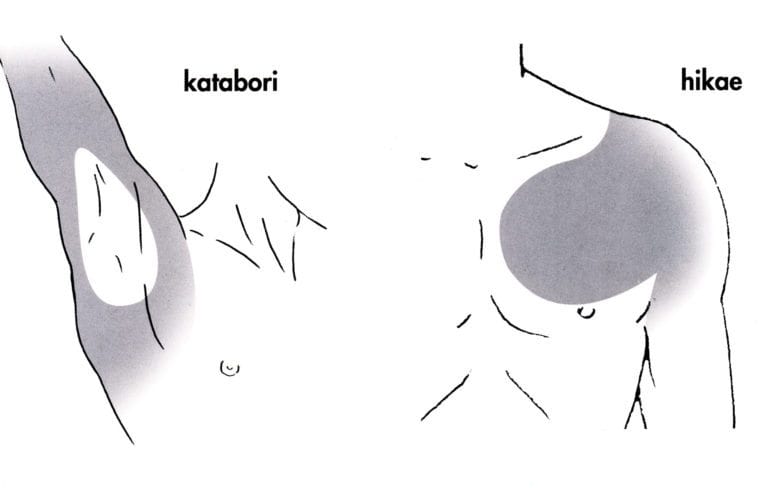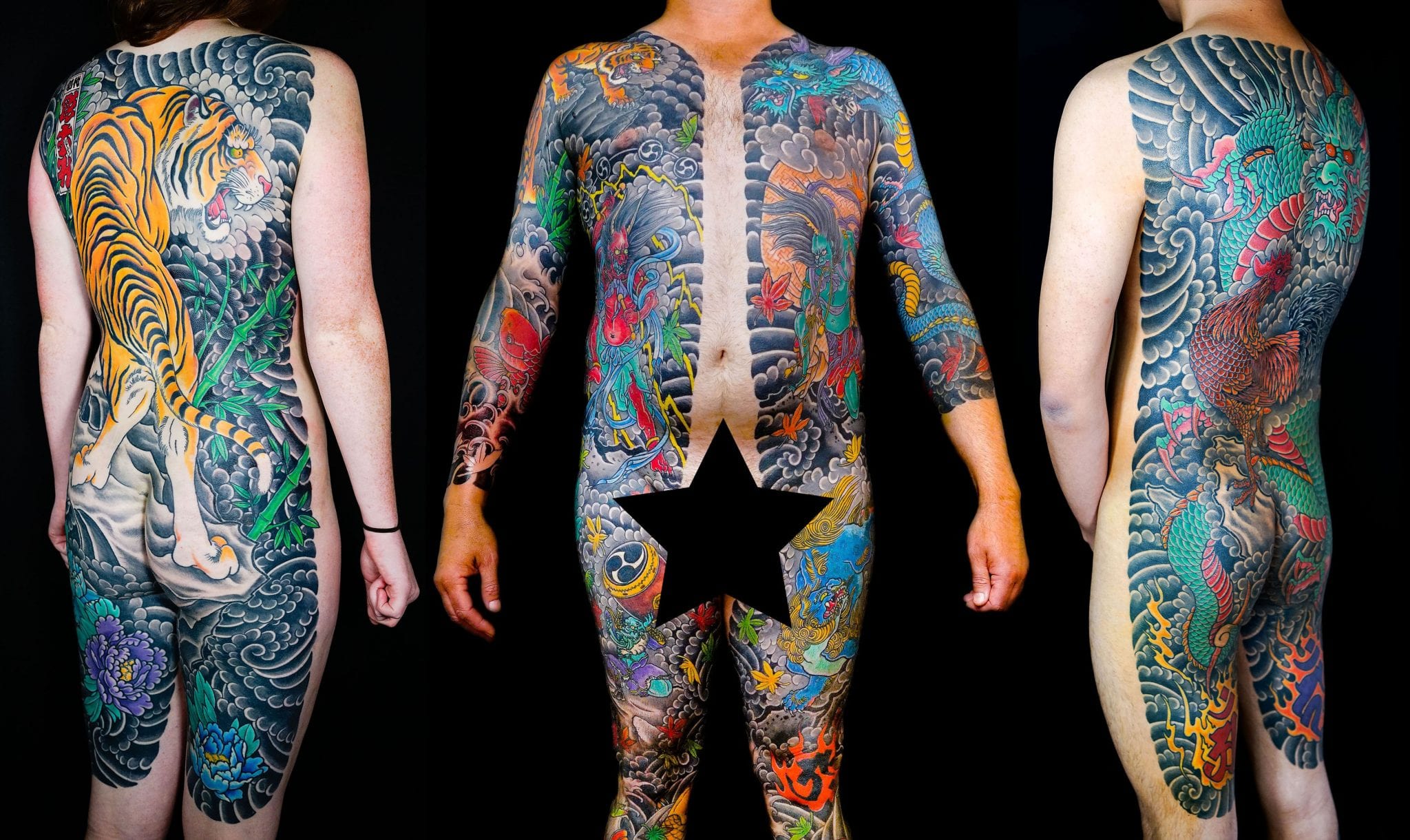
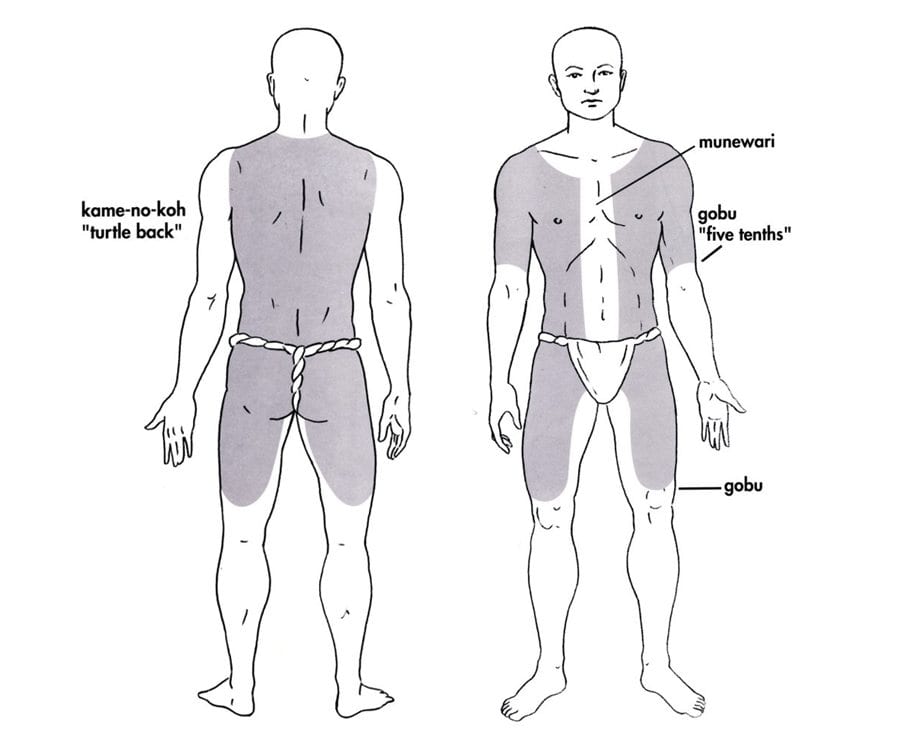
The central part of a Japanese bodysuit is the backpiece with full background or (nukibori/kame-no-koh) which occupies the whole backside from neck till about 20-30 centimetres below the crease of the buttocks. This is the biggest area of the body that can be tattooed and viewed at one glimpse. The rest of the tattoos support the story you want to tell with the backpiece. The subject matter is enhanced by a background consisting of the traditional elements such as spiral clouds, clouds, rocks, water, fire, waves and wind bars.
Potentially you can add secondary elements to this to specify seasons or atmosphere, like cherry blossoms, peony, chrysanthemum or maple leaves, which then become a recurring element throughout the bodysuit. You can start and interrupt a Japanese bodysuit in several ways. It is important to note that there are different ways to tattoo a man or a women. For example you start with the backpiece, generally speaking for a man you would create a backpiece with a background (nukibori), which makes it more powerful and pronounced. For a woman, and this is generally speaking, we don’t always use the background right away so as to make it more feminine in the beginning (gakubori), once sleeves are added or more body work is desired, then a background can be added to tie it altogether. However a woman may certainly elect to have a background added from the beginning if she desires the strong look of a determined female.

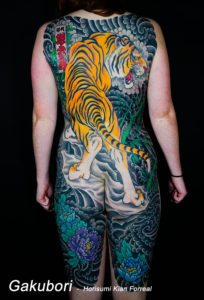
Next step are arms and chest tattoos. For males the chest plate or ‘hikae’ covers most of the pectoral area, 2-4 centimetres from the middle of the chest to 2cm above the nipple and following along the collarbone up top. A strong chest plate really makes a sleeve look great! For a woman just a little more shoulder in the front going to the chest but not all the way on to the chest muscle, this creates a nice feminine look while staying true to tradition and finishing off the sleeve properly.
Arms can be full sleeve (nagasode), 3/4 (shichibu) or half-sleeve (gobu) for men and be within tradition and also create a strong powerful Japanese Tattoo look. Everyone will have their own opinion and work requirements may dictate otherwise but I believe and traditional Japanese tattoo would favour that for females it should always be a 3/4 sleeve, this gives it a distinguished feminine look, not too hard and not too serious. A ½ sleeve on a woman may look too strong for some women and a full sleeve may be too much unless there is other serious body work present to accentuate the full sleeves.
Themes from left and right are sub-divided into feminine themes on the left and male themes on the right. An example is a dragon with an open mouth on the right, a dragon mouth closed on the left. Another example could be a koi swimming up on the right, a koi swimming down on the left. The elements and the background of the arms are consistent with those on the back. Subject matter on the front correspond with the story of the backpiece. Although this sequence is interchangeable which means you can start arm/chest then the other arm/chest followed with a backpiece.

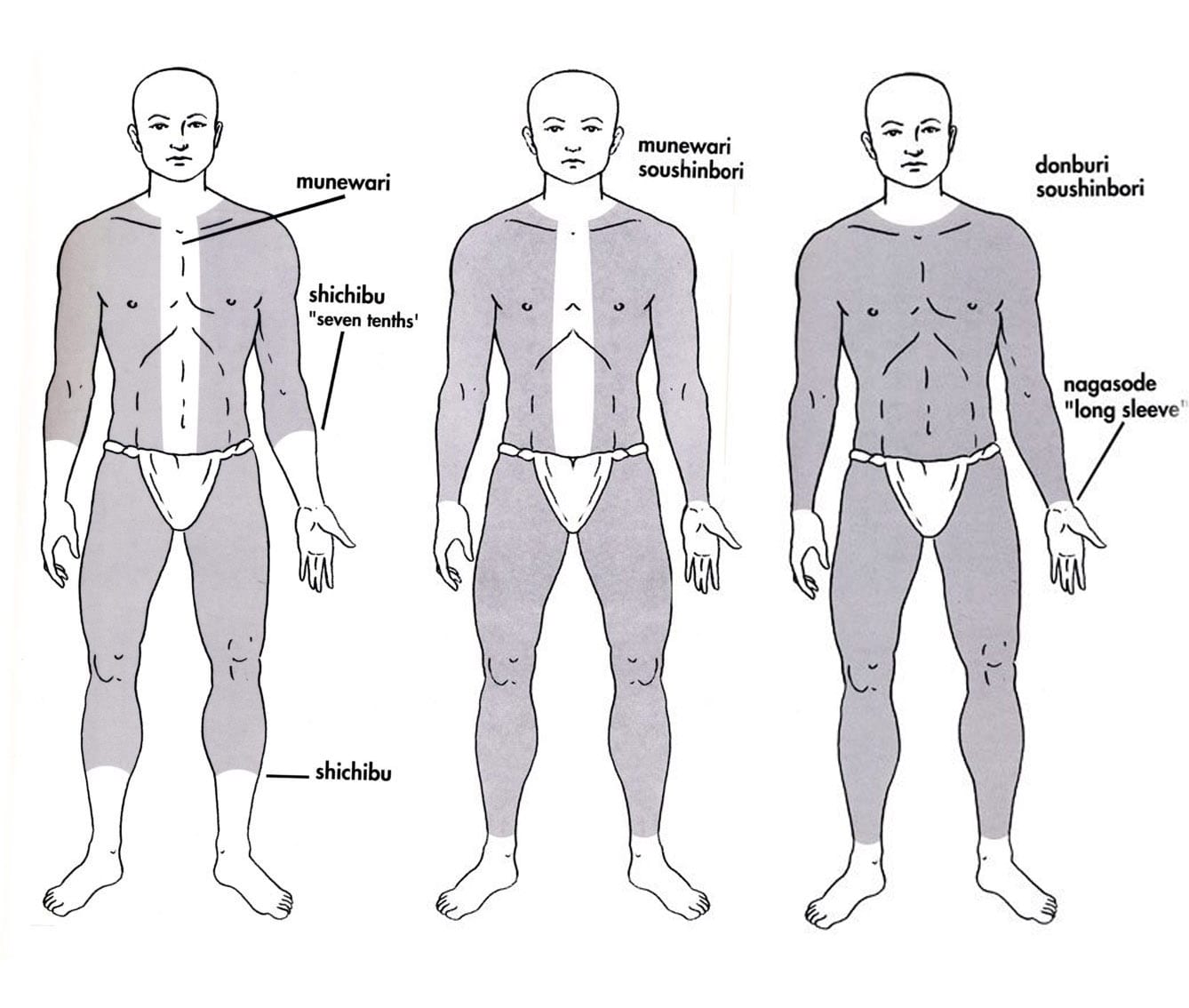
It is always best to get your backpiece first to set the mood and tone of your body suit. You can stop or pause at any moment. One sleeve is also very cool if that’s all you want now. And when that is finished you can still decide if you would like to continue. The good thing: it’s an open story and you decide. 2 sleeves? Superb! And this still looks great! Are you continuing for the suit, then after a backpiece and sleeves the side panels till about 3-5 cm above the knee get covered. Adding this to your backpiece you are now the proud owner of short suit. 3/4 or half sleeves fit best with a short suit.
Did you go for full sleeves? Then it makes more sense to go for a full suit, which entails being tattooed from ankle to neck to wrist on both sides with a ‘river’ of open space down the front (munewari soushinboro) or a solid front with no empty space (donburi soushinbori). As a finalization it is custom to get a ‘ Shunga” or small erotic, humoristic design in the armpits or between the thighs. It’s also possible to get long life symbols on your feet. Personal symbols can be added on the frontal mid-section of your side panels. Tattoos on hands and neck aren’t really traditional Japanese tattoo but are becoming more common, although I do not do them unless at least a short suit is completed. Also sacred symbols on the top of the head within the hairline are becoming more frequent and are extremely cool.
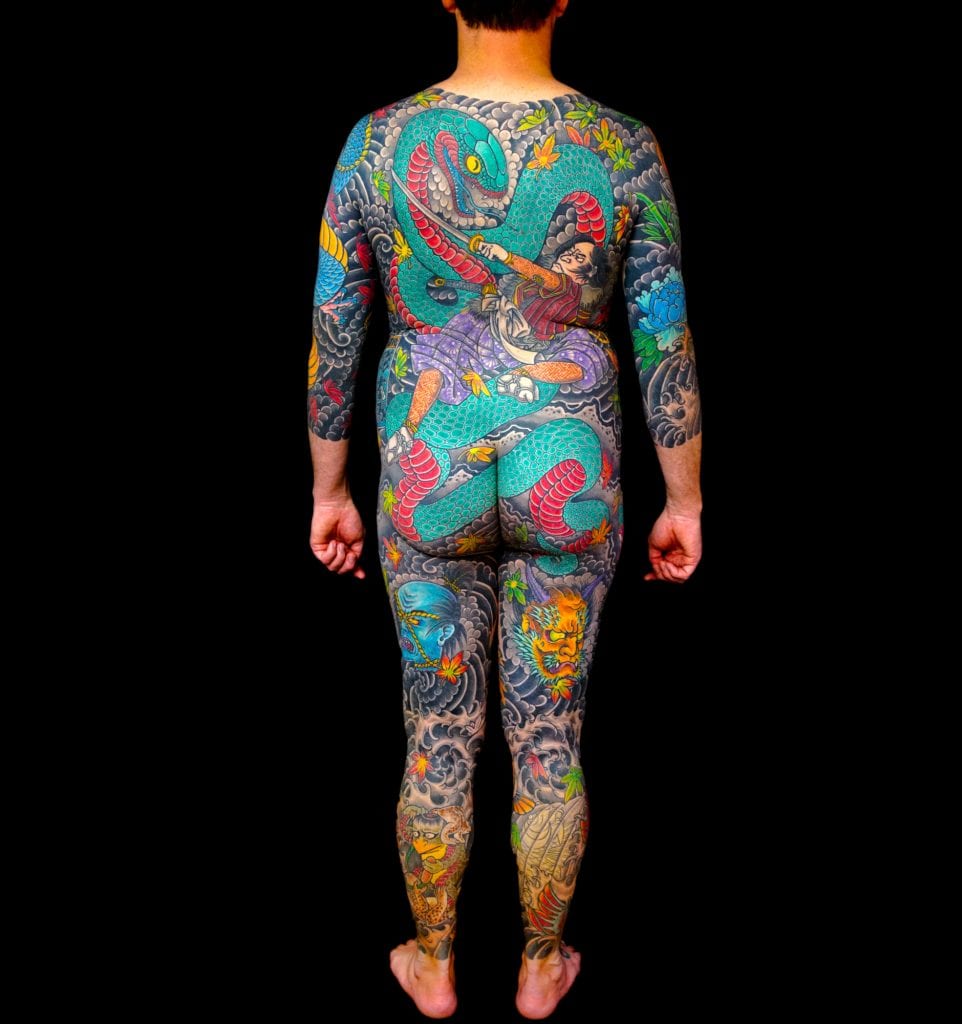
This is the way to build a bodysuit in short. So it will take some time before you are actually ready. To get a short suit in 2-3 years time for example, is fairly quick. A full suit can take up to 5 years or more. Often one likes to pause and enjoy the open ending or simply save up for the next step in the process. The latter can also be done in the shop; you can make regular down payments as to always have enough credit so as to not disturb the process. The appointments are made every 1., 2, 3 or 4 weeks, same day, same time if possible so as to establish a rhythm. This is most beneficial to the tattooist and yourself. And the result will be as such.
As the backgrounds and style of the tattooist in question remain constant you’ll see this throughout the suit, and that’s what makes a bodysuit a real bodysuit. A fully tattooed body from neck to ankles is not per se a bodysuit. That is only the case when the whole comes together and there is a harmony and a soft powerful grace to be seen. Suppose after two sleeves you want to change tattooist. In most cases this is really not advisable, but if done with consideration it can still yield a good result if you need to due to relocation or something similiar. At least always do it with respect and honoring the one who started your bodysuit story. Example: you got two cool sleeves from Horisumi-Kian Forreal and you would like a backpiece from Mike Rubendall, Henning, Chris Garver, Horiyshi 3 or whomever. Consider that top-tattooists mutually admire and respect each others tattoos so with some dialogue nobody loses face, which will enhance everybody’s feeling of well-being. Not you in the least.
Should you, whilst on holiday or as a favor to a friend or partner have a part tattooed that was destined for the bodysuit, the tattooist who started your suit can decide to not continue the tattoo. So be wise and honor the tattoo process. This works both ways, of course.
Japanese tattoos are based on a full body concept that is built in sections. Each Traditional Japanese tattoo fits the previous and possibly the next, but also are beautiful alone. Especially the backgrounds ensure that all tattoos become one, which is an important issue in the Japanese style tattoo. The backgrounds are often in black and grey, never blue water, the real subject of the tattoo is usually in color to some extent. Japanese tattoos clearly have their own distinct and timeless style, which after 20/30 years – if well done – still looks good.
Thank you for your consideration.
And big thank you to one of my mentors Greg Orie for help with this information.
